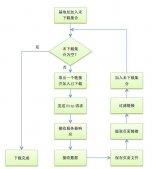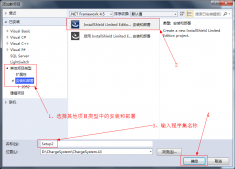简单说明一下:
线程池可以看做容纳线程的容器;一个应用程序最多只能有一个线程池;ThreadPool静态类通过QueueUserWorkItem()方法将工作函数排入线程池; 每排入一个工作函数,就相当于请求创建一个线程;
线程池的作用:
1、线程池是为突然大量爆发的线程设计的,通过有限的几个固定线程为大量的操作服务,减少了创建和销毁线程所需的时间,从而提高效率。
2、如果一个线程的时间非常长,就没必要用线程池了(不是不能作长时间操作,而是不宜。),况且我们还不能控制线程池中线程的开始、挂起、和中止。
一些使用例子:
实例一:
|
1
2
3
4
5
6
7
8
9
10
11
12
13
14
15
16
17
18
19
20
21
22
23
24
25
26
|
using System;using System.Collections.Generic;using System.Linq;using System.Text;namespace ThreadPoolDemo{ class Program { static void Main(string[] args) { System.Threading.ThreadPool.QueueUserWorkItem(new System.Threading.WaitCallback(TestThreadPool),new string[] {"drsw","sfs","sdfs"}); Console.ReadKey(); } public static void TestThreadPool(object state) { string[] arry = state as string[]; //传过来的参数值 int workerThreads = 0; int completionPortThreads = 0; System.Threading.ThreadPool.GetMaxThreads(out workerThreads, out completionPortThreads); Console.Write(DateTime.Now.ToString() + "--" + arry[0] + "----workerThreads=" + workerThreads + "----completionPortThreads=" + completionPortThreads); } }} |
上述代码运行结果:

使用例子二:
|
1
2
3
4
5
6
7
8
9
10
11
12
13
14
15
16
17
18
19
20
21
22
23
24
25
|
using System;using System.Collections.Generic;using System.Linq;using System.Text;namespace ThreadPoolDemo{ class Program { static void Main(string[] args) { System.Threading.ThreadPool.QueueUserWorkItem(new System.Threading.WaitCallback(TestThreadPool)); Console.ReadKey(); } public static void TestThreadPool(object state) { int workerThreads = 0; int completionPortThreads = 0; System.Threading.ThreadPool.GetMaxThreads(out workerThreads, out completionPortThreads); Console.Write(DateTime.Now.ToString() + "----workerThreads=" + workerThreads + "----completionPortThreads=" + completionPortThreads); } }} |
上述代码运行结果:

以上就是本文的全部内容,希望对大家的学习有所帮助,也希望大家多多支持服务器之家。















